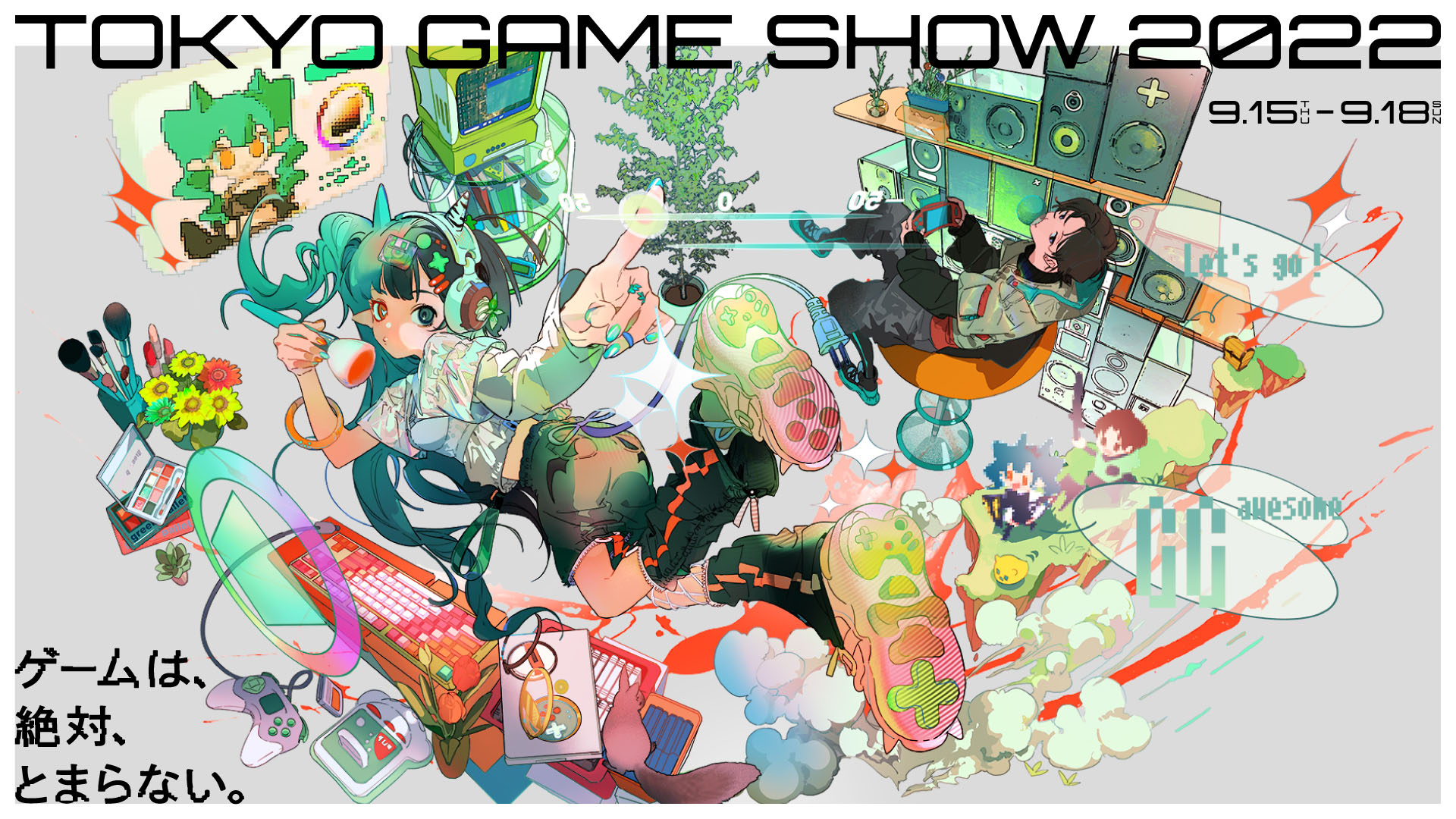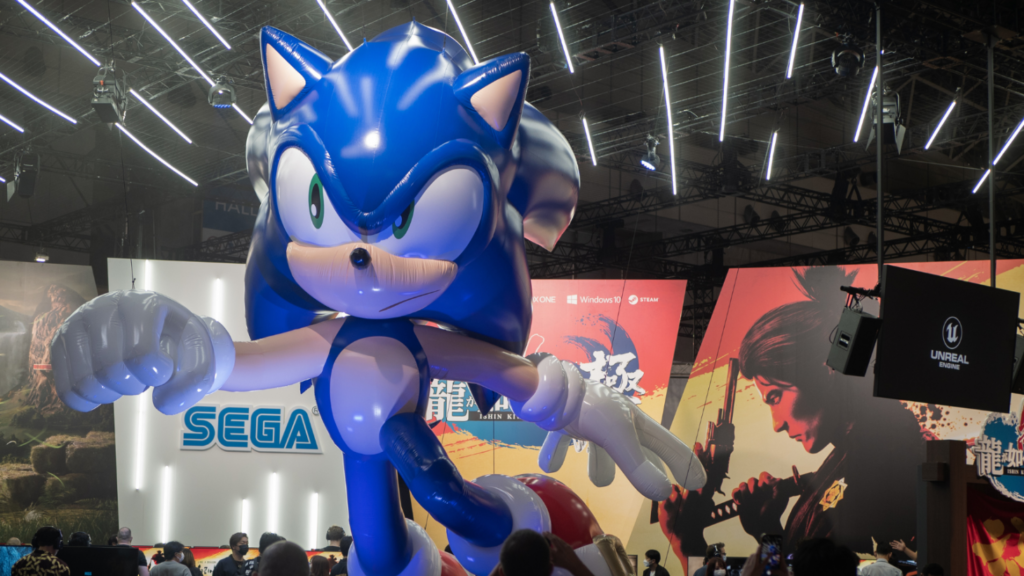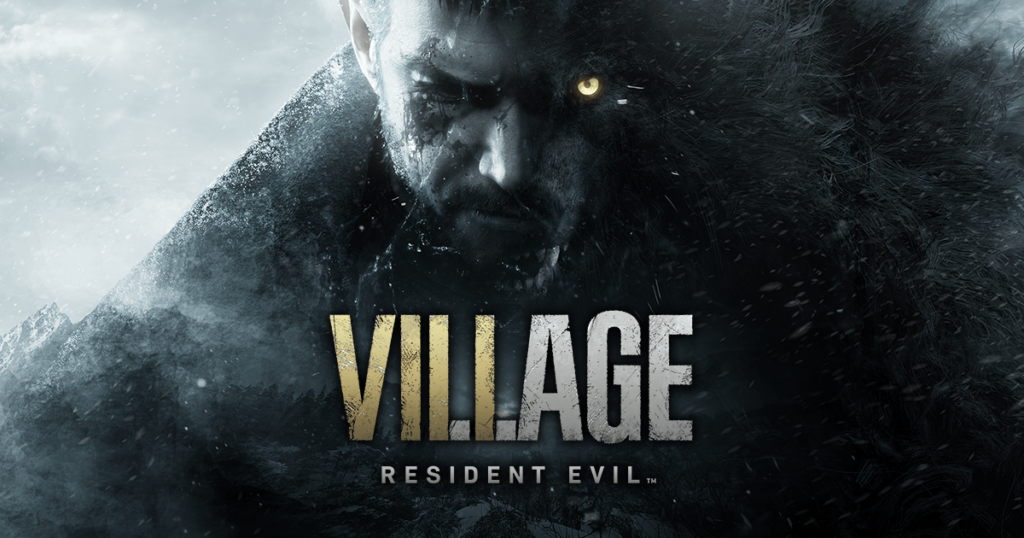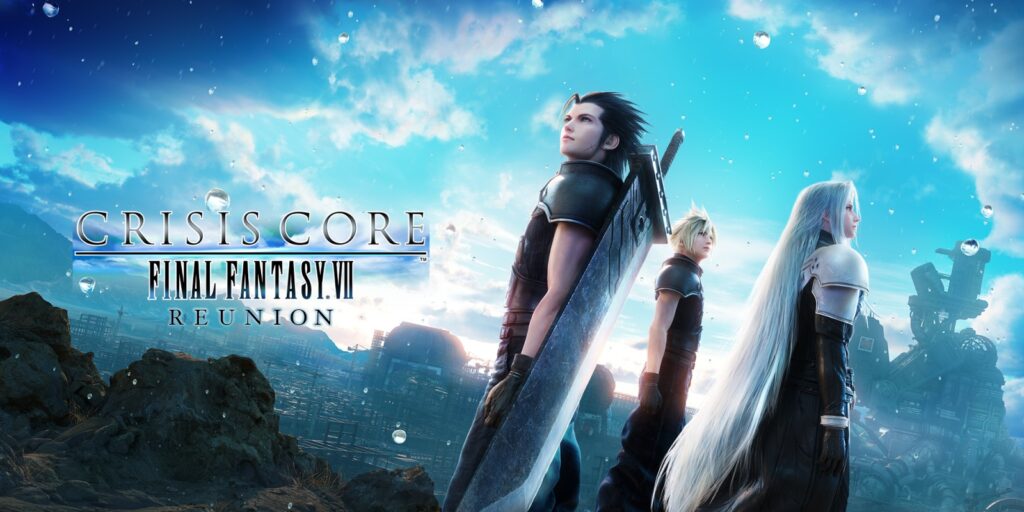This article originally appeared in the November 2022 issue of CONNECT.
Nathan Post (Saitama)
TGS 2022
It’s been some time since the last full-fledged Tokyo Game Show, but after years of canceled, digital, and hybrid events, Japan’s largest video game expo is finally back in full force. Once again, the whole spectrum of game developers and publishers is here to show off the latest and greatest gaming has to offer, from the smallest of indie titles to the biggest of blockbuster releases.
The three event halls were packed from end to end with demo booths, flashing lights, gigantic signs, and oh-so-many cosplayers.
Everywhere I looked, some giant game character was staring me down. A huge inflatable Sonic floated over Sega’s booth as freaky Persona monsters dominated the space next door. From axe-wielding samurai on horseback to bikini babes in hot tubs, there was something surprising around every corner.
With so many booths with titles being shown off and formidable lines for each of them, I couldn’t possibly cover every game on display, but here are some of the highlights from TGS 2022.
The Rundown!
Team Ninja brought along their new title Wo Long: Fallen Dynasty, scheduled for an early-2023 release.
Square Enix was offering up playable demos of their upcoming fantasy action RPG Forspoken along with Crisis Core: Final Fantasy VII Reunion, a remake of the Final Fantasy VII prequel.
Sega let people go hands-on with their first ever open-world-style Sonic game, Sonic Frontiers. They also brought along the latest game in the Yakuza series, Ishin, along with news the series would be known as “Like A Dragon” going forward.
Atlus showed off its upcoming ports of Persona 3, Persona 4, and Persona 5 for Switch.
Valve had a huge booth set up where you could chill on one of a zillion sofas and go hands-on with the company’s new handheld “Steam Deck” gaming PC. They even had a massive Steam Deck hanging overhead playing game trailers.
Bandai Namco’s big titles at the show were upcoming action RPG One Piece: Odyssey and Dragon Ball: The Breakers, an asymmetrical multiplayer title in which one superpowered baddy from Dragon Ball hunts down seven mostly defenseless civilian players.
Capcom had playable demos of Street Fighter 6 for the first time, which drew quite the crowd. They were also demoing their upcoming co-op mechs vs dinosaurs title Exoprimal, along with the upcoming Monster Hunter: Rise expansion: Sunbreak. But their most popular exhibit had to be the playable demo of Resident Evil: Village VR on the PlayStation VR 2 system.
Kojima Productions’ enigmatic presence was also of note. While they didn’t have any explicit announcements, their merchandise booth had a huge poster of a shadowy woman bearing the question “Who am I?”, potentially teasing a new title from the man himself.
Hands-On Impressions
The two most exciting titles would have to be Sony’s PlayStation VR 2 demo of Resident Evil Village VR and Square Enix’s upcoming Final Fantasy VII prequel Crisis Core: Final Fantasy VII Reunion. I was able to try out both of these titles and come bearing news and impressions from each.
Resident Evil Village on PlayStation VR 2
PSVR 2 on Display
Although Resident Evil Village (that’s VIIIage, as in 8, har har) came out over a year ago, crowds were still clamoring to try out the demo for this game. Every single slot was gone within an hour of the show opening, even on the business days of TGS. That’s how excited people were to see it.
After all, this is the first event in which Sony has let anyone go hands-on with its elusive PlayStation VR 2 headset and controllers. I was fortunate enough to weasel my way into the demo despite the crowds and came away impressed with the VR version of the game and especially with the hardware.
Headset Upgrades
I was immediately struck by how clear the image was on the headset. The original PSVR had a screen with a relatively low resolution and, coupled with the limited power of the PS4, also ended up having to drop the resolution of many of the games that ran on it. The PSVR 2, however, looked significantly sharper and didn’t have the annoying “screen door effect” of the original, in which the low-res screen’s distance between pixels would make it look like you were looking through a screen door while playing VR games. The higher-resolution screen on the headset and significantly more powerful PS5 are no doubt to thank for that improvement. As an added bonus, the headset also features rumble now, so if a spooky werewolf man punches you in the head, you’re gonna feel it! Kind of.
There are also sensors inside the headset that track your eye movements. Among other things, this lets the console focus its processing power and provide additional detail in the areas of the screen you’re looking at by redirecting resources from the areas that you aren’t. I didn’t notice this next bit used in RE8, but Sony has also talked about using the eye tracking to aim or highlight objects in VR titles simply by looking at them, which seems like it could have some pretty exciting implications for VR game design.
New Controllers
The controllers have also gotten a huge upgrade and now (finally) feature two standard analog sticks for movement. They also feature basic finger tracking, which allows them to tell roughly where your fingers are and replicate that in-game, even when you’re not pressing any buttons.
Back to the Village
Speaking as someone who finished RE8 upwards of six times, this all came together to make Resident Evil Village feel more immersive and exciting than ever before. The game looked great in VR. Using your gun to aim and shoot in VR felt fun and natural. And while the standard RE8 wasn’t all that scary of a game, facing the monsters in VR made my fight-or-flight response kick in more than a few times! It genuinely feels like the best way to experience the game.
There are a few nitpicks I have about my time with it, however. While the resolution is miles ahead of where it was on the original PSVR, the world of RE8 still didn’t look quite as crisp as playing at full resolution on a TV screen. Whether the hardware or the software is to blame for that, I can’t say, having only tried one game.
Release Info
PlayStation VR 2 is currently scheduled to launch sometime in the first half of 2023. The standard version of Resident Evil Village is available now, but there is not yet any word on when the update that enables VR play will be released. We now have details on the release date and pricing of PSVR2. It will release on February 22, 2023 and will cost $549.99 or 74,980円.
Crisis Core: Final Fantasy VII Reunion
Final Fantasy VII Remake, Part 0?
One of the most exciting titles at the show was the next installment in the Final Fantasy VII Remake series. No, we’re not getting Part 2 just yet, but this is the next best thing. Crisis Core Reunion is a remake of the Final Fantasy VII prequel, Crisis Core: Final Fantasy VII, which originally came out on the PSP way back in 2007.
Set seven years before the start of the FF7, it follows side-character Zack Fair’s time in SOLDIER and sets up the events of the 1997 original. Or so it would seem! I actually have it on good authority that this is more than a straight remake and will instead lead into the alternate version of FF7’s story presented in the 2019 title Final Fantasy VII Remake, which has dramatic implications for Zack’s character. If you know, you know.
Gameplay Changes
I was able to play a 15-minute demo of the game that followed Zack as he infiltrates a Wutai military compound. Along the way, he encounters a younger version of the ever-cheerful ninja Yuffie from FF7 and soon comes face to face with the classic boss Ifrit.
The title is more action-focused than FF7 Remake, which used a hybrid system of real-time combat and menus. Crisis Core Reunion ditches the menus entirely and instead has Zack slashing, blocking, and dodge-rolling his way through enemy encounters all in real time. Even the original Crisis Core had something of a real-time menu system for selecting attacks, but even that has been streamlined away. Instead, there are now button shortcuts for items and spells, though their use was limited in the demo.
Keeping What Works
Crisis Core Reunion also retains the slot-machine-like Digital Mind Wave system from the original Crisis Core, which has three slots constantly spinning in the upper-left corner throughout combat, which provide random combat bonuses, Limit Break attacks, and even level-ups when three numbers or character portraits line up. It was an unusual system to base a game around back in the day, and it’s just as crazy now. But it’s also undeniably exciting to have three Sephiroth portraits line up in the middle of combat and unleash his signature Octoslash attack to wipe out your enemies in a flash.
The visuals are the biggest upgrade over the original Crisis Core, and they look gorgeous. While the original was limited by PSP hardware, this new version for modern PCs and consoles is able to deliver a version that looks and runs significantly better than the original release did 15 years ago. Still, the tweaks to combat and promise of a new twist on the story should be enough to get any FF7 fan excited.
Release Info
Crisis Core: Final Fantasy VII Reunion is scheduled to release on PlayStation, Xbox, Switch, and PC on Dec. 13, 2022.
Sense of Wonder Night
Also returning in 2022 was the TGS Sense of Wonder Night, which seeks to highlight and award indie games that bring something new to the table and inspire a “sense of wonder” in their players. Games are nominated in a variety of categories like “Best Experimental Game,” “Best Game Design,” “Best Presentation,” and more. Below are a few of the standout titles from the show to spark your imagination.
Rhodopsins
https://www.youtube.com/watch?v=FPOMyONFWfc
Rhodopsins is a student project from Sapporo City University in Japan. In this game, three players work together in a cooperative 2D platformer while physically wearing red-, blue-, and green-colored glasses while they play. The player wearing the red glasses will be unable to see red objects on screen, while the blue and green players will be unable to see blue and green objects.
Since each person can only see certain characters, enemies, and obstacles, the three players must communicate and work together to clear the stages. It’s a simple idea that seems like it could make for some hilariously entertaining co-op scenarios.
The game currently has no release information, but the students have said they do hope to share it with a larger audience eventually.
Morse
https://presskit.itch.io/morse
Made by UK indie studio ALJO Games, Morse tasks the player with turning the tide of battle in World War I armed not with a gun but with a telegraph. Played with a physical telegraph controller featuring a telegraph key, spring-loaded launch button, switchboard and plug, and actual 1930s-style headphones, Morse has players tapping out actual Morse code to target and destroy German ships and fighters in what looks akin to timing-based games of Battleship.
The game also features a heavy-story focus with branching choices to make and characters to befriend. It can also be played on a regular controller or keyboard, but come on, how many other games are you going to get to play with a telegraph?
A playable demo of Morse is out now on Steam.
Pastry Panic (with cat)
https://thezhen10.github.io/pastrypanic/
Made by Yong Zhen Zhou of Singapore, this has to be the wildest game shown off at Sense of Wonder Night. Pastry Panic (with cat) has players attempting to cook pastries through the five actions of kneading, cutting, sprinkling, filling, and baking their bread. But rather than using buttons on a controller, players control the game with a brown box called the Pastry-o-Matic, which has buttons, levers, dials, and switches that need to be physically removed from and attached to different parts of the controller to operate different machinery mid-game.
As if that wasn’t enough, the recipes for each kind of pastry are printed in a physical recipe book players will need to quickly flip through and read while also managing the action on screen and their insane Pastry-o-Matic controller while the clock ticks down on the customers’ orders. Plus, there’s also a lazy cat that just kind of sits there.
I have no idea how this could ever be turned into a viable commercial product with all the physical objects needed to play the game, but that crazy inviability is also where that sense of wonder comes from.
TGS 2023 En Route
While gaming companies and fans are still dealing with the swath of delays caused by COVID-19, there were still enough new games on display to keep excitement levels high for 2022 and 2023 titles and beyond.
With huge upcoming titles like Crisis Core: Final Fantasy VII Reunion, innovative new hardware like the PSVR 2, not to mention the ever-expanding breadth of wildly inventive indie content, there are plenty of great gaming experiences on the horizon.
After skipping shows or having in-person/online hybrid events for the past few years, it feels great to have TGS back in full force. Here’s hoping next year’s event will be even better. Barring any unforeseen pandemics, TGS is scheduled to open its doors to the gamers of Japan once again from Sept. 21 through 24, 2023.
Nathan Post is a former Gunma JET who now lives and works as a J to E game translator in Saitama. He likes piña coladas, getting caught in the rain, and the fast-approaching God of War: Ragnarök release date.








